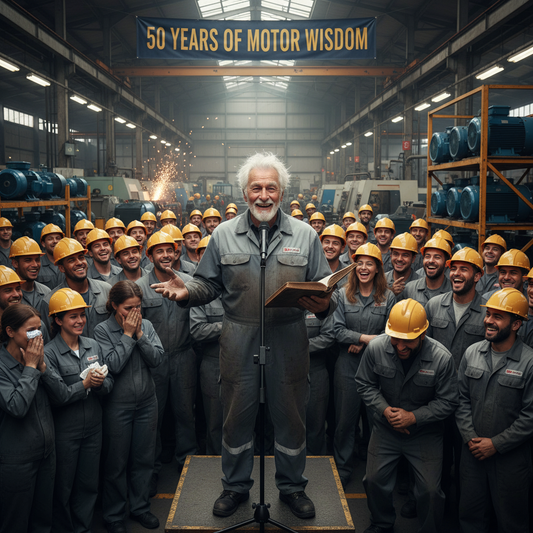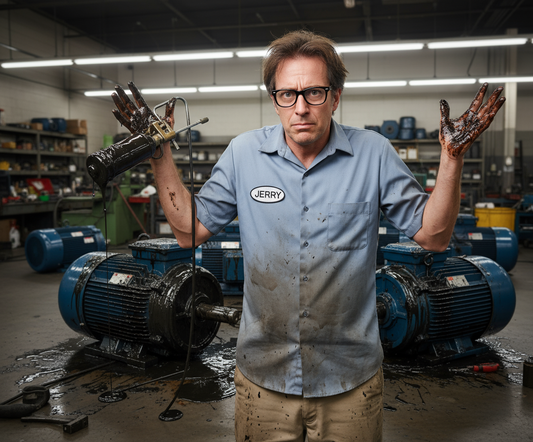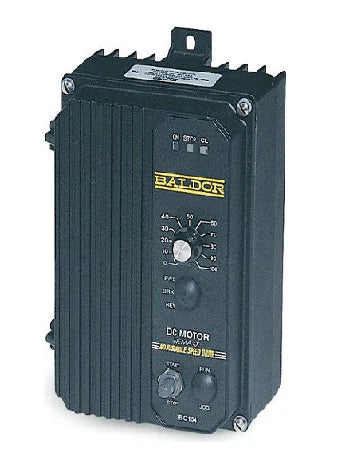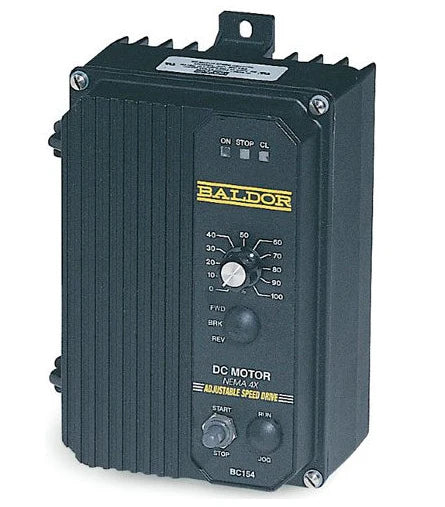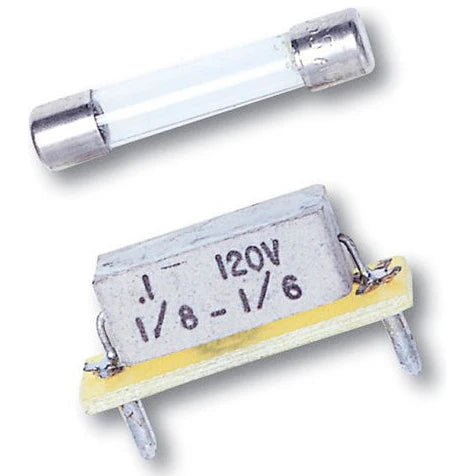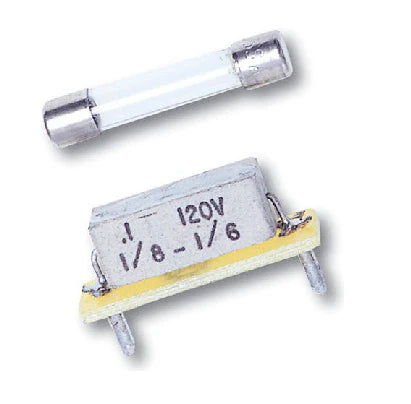
Share
Bearings Don't Lie
(But Your Maintenance Guy Might)
The greasing conspiracy, vibration analysis, and why Jerry is banned from the grease gun
← Previous: "The $47 Test That Saves $47,000"
Bearings are honest.
They don't play games. They don't lie. They don't tell you they're "fine" when they're screaming internally.
When a bearing is bad, it tells you. Loudly. With vibration frequencies that show up on analyzers like neon signs.
But here's the problem:
90% of facilities kill their bearings through aggressive over-greasing.
Then blame the bearings.
It's like force-feeding someone 12 pizzas a day and wondering why they're not healthy.
What Actually Kills Bearings
Bearings fail for specific, predictable reasons.
Let's rank them by frequency:
Too much grease: Creates excessive heat, churns grease into liquid, blows out seals.
Too little grease: Metal-on-metal contact, heat, rapid wear.
Wrong grease type: Incompatible greases form solids, block lubrication.
Contaminated grease: Dirt, water, metal particles act like grinding paste.
The Jerry factor: "When in doubt, pump it full." This is how 40% of bearings die.
What happens: Motor shaft not aligned with driven equipment. Creates side loads on bearings.
Result: Bearings loaded unevenly. One side works 3x harder. That side fails first.
Detection: High axial vibration. Elevated bearing temperature. Coupling wear.
Prevention: Laser alignment. Every time. No exceptions.
How it gets in: Damaged seals. Open drain plugs. Power-washing motors. Industrial dust.
What it does: Abrasive particles (dirt, metal, rust) get between balls and races. Acts like sandpaper.
Result: Accelerated wear. Pitting. Surface damage. Failure.
Prevention: Proper seals. Don't power-wash motors. Keep drain plugs in place when not draining.
Common mistakes: Hammering bearings on cold. Wrong installation tools. Cross-threading. Using old bearings.
What happens: Brinelling (dents in races). Misalignment. Preload damage.
Result: Bearing works for a while, then fails "mysteriously." Not mysterious. You damaged it during installation.
Prevention: Heat bearings to 200°F before installation. Use proper pullers and drivers. Follow manufacturer specs.
The Great Greasing Conspiracy
Here's what nobody tells you about bearing grease:
Most facilities over-grease by 300-500%.
Why? Because "more is better" makes intuitive sense.
Except it's completely wrong.
🧈 Grease Amount vs. Bearing Life
See the pattern?
The optimal range (30-50% full) gives you 10-15 year bearing life.
Over-greasing (60%+) cuts that life in HALF or more.
1. Excessive Heat: Too much grease churns constantly. Friction creates heat. Heat breaks down grease. Bearing overheats.
2. Seal Damage: Excess pressure blows out seals. Now you have no seal AND too much grease. Contamination enters. Game over.
3. Starvation: Paradoxically, over-greasing can cause starvation. Grease gets so hot it liquefies and leaks out. Bearing runs dry.
4. Increased Friction: Bearing has to work harder pushing through excess grease. Motor draws more current. Wastes energy.
So how much grease should you actually use?
There's a formula. Of course there's a formula.
Formula: G = 0.005 × D × B
Where:
- G = Grease amount in grams
- D = Bearing outside diameter in mm
- B = Bearing width in mm
Example: Common 6309 bearing (45mm OD × 25mm width)
G = 0.005 × 45 × 25 = 5.6 grams of grease
That's about half a teaspoon.
Not a tube. Not a cartridge. Not "until it oozes out."
Half. A. Teaspoon.
How Vibration Analysis Actually Works
Vibration analysis sounds complicated.
It's not. It's just listening to bearings complain.
Every bearing defect creates a specific vibration frequency. These frequencies show up on an FFT (Fast Fourier Transform) spectrum analyzer.
It's like bearings speaking in code. Once you know the code, they tell you exactly what's wrong.
BPFO - Ball Pass Frequency Outer Race:
- What it means: Defect on outer race (stationary part)
- How it sounds: Regular, rhythmic thumping
- Typical frequency: 3-6× running speed
- What to do: Replace bearing soon (weeks to months warning)
BPFI - Ball Pass Frequency Inner Race:
- What it means: Defect on inner race (rotating part)
- How it sounds: Higher pitched than BPFO
- Typical frequency: 5-8× running speed
- What to do: Replace bearing soon (more urgent than BPFO)
BSF - Ball Spin Frequency:
- What it means: Defect on the balls themselves
- How it sounds: Erratic, grinding noise
- Typical frequency: 2-3× running speed
- What to do: Replace bearing immediately (can fail suddenly)
FTF - Fundamental Train Frequency (Cage):
- What it means: Cage damage or wear
- How it sounds: Low frequency rumble
- Typical frequency: 0.3-0.5× running speed
- What to do: Can run for a while, but monitor closely
Here's the beautiful part:
These frequencies appear WEEKS OR MONTHS before bearing failure.
You get early warning. Time to plan. Order parts. Schedule downtime.
Instead of scrambling at 2 AM when the bearing explodes.
Outer Race Defect Confirmed
Replace Within 30 Days
Real Bearing Failures We Caught
🏭 The Fan That Was "Running Fine"
Customer complaint: "Just vibration check it during PM. No problems."
Vibration reading: 0.38 in/sec overall
FFT analysis: Massive BPFO peak at 3.8× running speed
Our report: "Outer race defect. Bearing failing. Replace within 2-4 weeks."
Customer response: "But it sounds fine to me."
What we did: Marked it critical. Recommended immediate bearing replacement.
What they did: Ordered bearing. Scheduled replacement for next maintenance window (3 weeks out).
What happened: Bearing lasted exactly 21 days. Replaced during planned downtime. Zero emergency costs.
If we hadn't caught it: Bearing would've failed unscheduled. $15,000+ emergency (weekend service, expedited bearing, production loss).
Actual cost: $850 (scheduled bearing replacement during normal hours)
Savings: $14,150
💧 The Pump That Jerry Greased
Background: Pump bearings on quarterly grease schedule.
Jerry's approach: "I gave it extra grease to make sure it's good."
Vibration trend:
- Before Jerry: 0.15 in/sec (perfect)
- 1 week after Jerry: 0.28 in/sec (elevated)
- 2 weeks after Jerry: 0.45 in/sec (bad)
- 3 weeks after Jerry: 0.78 in/sec (catastrophic)
What Jerry did: Pumped an entire grease cartridge into the bearing. About 20× the required amount.
What happened: Bearing overheated from churning excess grease. Seals blew out. Grease liquefied and leaked. Bearing ran dry. Failed.
Cost to fix: $2,400 (bearing replacement + seal repair + cleanup)
Cost if properly greased: $0 (bearing had 8+ years of life left)
Jerry's current status: Banned from grease guns. Permanently.
⚡ The Compressor That Vibrated Into Another Dimension
Call: "Compressor is really loud. Can you check it?"
Vibration reading: 1.2 in/sec (extreme)
Our immediate response: "Shut this down NOW. Bearing failure imminent."
Customer: "Can we run it until Friday? We need production."
Our response: "You CAN. But it will fail. Probably catastrophically. Today is Tuesday."
They ran it anyway.
Failure time: Thursday 3:47 PM
Failure mode: Bearing disintegrated. Sent metal fragments through motor. Damaged rotor. Scored shaft. Cracked end bell.
Emergency repair cost: $12,800 (complete motor rewind + shaft repair + bearing replacement + end bell welding repair)
If shut down Tuesday: $1,400 (bearing replacement)
Cost of two extra days of production: $11,400
Lesson: When vibration analyzer says "shut down now," shut down now.
How Misalignment Murders Bearings
Misalignment is bearing enemy #2 (after Jerry).
Even tiny misalignment creates huge problems:
⚙️ Alignment vs. Bearing Life
(< 0.002" offset)
(0.010" offset)
(0.020" offset)
(0.050" offset)
0.010" misalignment = 80% reduction in bearing life
(That's the thickness of 2-3 sheets of paper)
Why does misalignment kill bearings so fast?
Creates Side Loads: Bearings designed for radial loads. Misalignment creates axial (side-to-side) loads. Bearings hate this.
Uneven Load Distribution: Instead of load distributed across all balls, concentrated on few balls. Overload. Premature wear.
Increased Friction: Shaft trying to run at angle. Bearings fighting it constantly. Heat buildup. Accelerated wear.
Vibration: Misalignment creates vibration. Vibration fatigues bearing components. Cracks develop. Failure follows.
The fix? Laser alignment. Every time.
Cost: $300-600
Benefit: 5× bearing life extension
ROI: Massive
Jerry's Greatest Hits: A Compilation
We've mentioned Jerry a lot. You might think we're exaggerating.
We're not.
These are real things Jerry (and Jerry-like people) have done:
🎖️ Jerry's Hall of Shame
1. The Grease Flood of 2023
Pumped grease into bearing "until it came out." Used entire 14oz cartridge. Bearing housing only holds 2oz.
Result: Bearing lasted 11 days. $3,200 repair.2. The Mix-and-Match Special
Mixed two different grease types (polyurea and lithium complex). They reacted. Formed solid chunks.
Result: Bearing seized. $4,800 emergency replacement.3. The "Close Enough" Alignment
Aligned motor by eye. "Looks pretty straight to me." Was off by 0.035".
Result: Bearings lasted 4 months. Coupling destroyed itself. $5,400 total damage.4. The Hammer Installation Method
Installed bearing by hammering directly on outer race. "That's how my grandpa did it."
Result: Brinelling damage. Bearing failed in 2 weeks. $2,100 repair.5. The Drain Plug Incident
Removed drain plugs to "let the moisture out." Forgot to put them back. For 3 months.
Result: Water entered. Both bearings corroded. $6,200 emergency bearing replacement.6. The Power Washer Massacre
Cleaned motor with pressure washer. "Gotta keep it clean!" Blew seals out of both bearings. Forced water into windings.
Result: Complete rewind needed. $8,500. Motor was only 2 years old.7. The Experimental Lubrication
Ran out of bearing grease. Used chassis grease. "Grease is grease, right?"
Result: Wrong. Chassis grease broke down at motor temperature. Bearing starved. $2,800 failure.Total damage from Jerry's interventions: $32,000
Jerry's intentions: Good
Jerry's training: YouTube University
Jerry's results: Expensive
What You Should Actually Do About Bearings
Here's the simple version:
1. Grease Correctly (Not Jerry-Style)
- Use the formula: G = 0.005 × D × B (in grams)
- Or use manufacturer recommendations
- Or call us and we'll tell you
- Never "until it comes out"
- Never a full cartridge
- Never let Jerry do it
2. Grease Schedule
- 24/7 operation: Every 3-4 months
- 8-hour shifts: Every 6 months
- Intermittent use: Annually
- Harsh environment: Every 2-3 months
3. Monitor Vibration
- Critical motors: Monthly vibration checks
- Important motors: Quarterly checks
- Trend the data - single readings mean nothing
- Act on rising trends BEFORE failure
4. Align Properly
- Laser alignment during installation
- Re-check alignment annually
- After any motor removal/reinstallation
- Target: <0.002" offset
5. Replace Bearings During Rewinds
- If motor is getting rewound, replace bearings
- Labor is already happening anyway
- Fresh bearings with fresh windings = maximum life
- Old bearings in rebuilt motor = penny wise, pound foolish
Need Bearing Replacement or Vibration Analysis?
We'll diagnose it, fix it right, and explain what we found.
📞 Call: (720) 626-9805
Vibration analysis: $85/motor
Bearing replacement: $400-1,200 depending on size
Peace of mind knowing Jerry didn't do it: Priceless
The Truth About Bearings
Bearings are simple mechanical devices.
Metal balls rolling between metal races.
They should last 10-15 years. Sometimes 20+.
But most bearings don't make it 5 years.
Not because bearings suck.
Because we kill them with kindness.
Over-greasing. Under-greasing. Wrong grease. Contamination. Misalignment. Installation damage. Ignoring vibration warnings.
It's death by a thousand small mistakes.
Bearings don't lie. They tell you exactly what's wrong. With vibration frequencies. With temperature. With noise.
We just have to listen.
And maybe keep Jerry away from the grease gun.
Let's Fix Your Bearing Problems
Call us. We'll test your bearings. Check vibration. Recommend fixes. No Jerry involved.
📞 Call: (720) 626-9805
Colorado Electric Motors
Protecting bearings from well-meaning maintenance guys since 1970.
P.S.
Jerry is not a real person.
Jerry is a composite character based on hundreds of maintenance technicians we've encountered.
All Jerry stories are real events.
Just done by different Jerrys.
If you work with a Jerry, we're sorry.
If you ARE Jerry... we're still sorry. But also, please stop.
P.P.S.
The formula (G = 0.005 × D × B) is real.
Nobody uses it.
Everyone should.
Half a teaspoon of grease ≠ a full cartridge.
This has been a public service announcement.
P.P.P.S.
After publishing this, we received 47 emails from people saying "I think I'm Jerry."
Self-awareness is the first step.
The second step is putting down the grease gun.
Slowly.
📺 NEXT EPISODE (SERIES FINALE!)
"Emergency Motor Service: A Love Story of Panic and Money"
Coming in 2 days... (The 2 AM calls, the Friday night failures, and why waiting until Monday costs $100,000)

